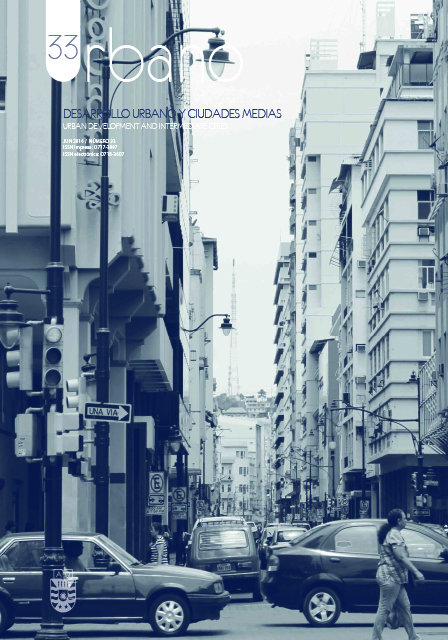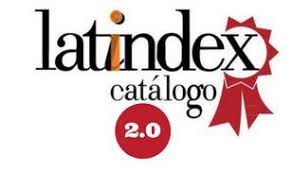Guidelines for the large-scale recycling of residential building envelopes
Keywords:
recycling, residential buildings, energy consumption, facadeAbstract
This paper presents a methodology for the identification of technologies and guidelines for the large-scale recycling of residential building envelopes. Conducted in the city of La Plata, Argentina, the study is based on the identification of defined urban areas, representative mosaics and residential buildings. A classification methodology was implemented at the building scale to identify typologies and establish current technological patterns and their possible replacements in order to achieve greater energy efficiency. A base scenario with current technologies was created, and large-scale recycling with the planned improvements was analyzed to thus optimize building envelopes and their habitability. With initial results, it is possible to evaluate potentialimprovements to measure the reduction in energy demand in the residential sector.
Downloads
References
ADEME, Agencia del Ambiente y del Manejo de la Energía; AFME, Agencia
Francesa para el Manejo de la Energía; y COSTIC, Comité Científico y Técnico de la Industria del Calor. 1986.
APUD, E.; ARAOZ, J. C.; CEVOTO, E.; ECHARTE, R.; GUADAGNI, A.; LAPEÑA, J.; MONTAMAT, D.; OLIOCO R. (Ex Secretarios de Energía). La Política Energética como Política de Estado -Consensos para una nueva política energética- Documentos de los Ex Secretarios de Energía 2009-2014. Editorial: Instituto Argentino de la Energía “General Mosconi”. Buenos Aires. 207p. 2014.
DE ROSA, CARLOS. Vivienda social. Déficit habitacional y habitabilidad
higrotérmica. Evaluación y propuesta para su comportamiento en la Pcia
de Mendoza. Proyecto de investigación y Desarrollo Nº 3-094000/88. Doc.
inédito, pp. 7, 8. 1989.
DISCOLI, C. Modelo de calidad de vida urbana. Metodología de diagnóstico
orientada a evaluar el uso eficiente de los recursos, las necesidades básicas en infraestructura, servicios y calidad ambiental. PIP 112-00801-00606. CONICET. 2009/2011.
DISCOLI, C; MARTINI, I. La ciudad y sus interacciones con la dimensión
energética y ambiental. Selected paper del 5to. Congreso de PLURIS. Brasilia. 2012.
IDAE, Instituto para la Diversificación y Ahorro de la Energía. Jornadas técnicas y de gestores energéticos municipales. Dirección de Residencial y Servicios. Madrid. 1986.
MATTEUCCI, S.D.; MORELLO, J.; RODRÍGUEZ, A. & MENDOZA, N. El Alto Paraná Encajonado Argentino-Paraguayo: mosaicos de paisaje y conservación regional. FADU, Buenos Aires. 2004.
PASSIVE HOUSE RETROFIT. [en línea] [Fecha de consulta: 20-04-2014] http://www.energieinstitut.at/Retro t/.
RODRÍGUEZ GONZÁLEZ, A; DÍAZ, V.; CAAMAÑO, J.; WILBY M. Towards a
universal energy efficiency index for buildings. Energy and Buildings, Vol 43, Issue 4.Pp.980-987, 2011.
RODRÍGUEZ L., MARTINI I., DISCOLI C. Estudio de estrategias tecnológicoconstructivas para el reciclado masivo de la envolvente edilicia residencial, orientado a la eficiencia energética. Avances en Energías Renovables y Medio Ambiente. ASADES. ISSN 0329-5184. Volumen 15, pp. 35-39, 2011.
ROSENFELD, E. Plan piloto de Evaluaciones energéticas de la zona Capital
Federal y Gran Bs As. AUDIBAIRES. Concurso Nacional organizado por la CIC y Secretaría de Energía de la Nación. Contrato SE N1 1399/83. 1985/86.
ROSENFELD, E. Mejoramiento de las Condiciones Energéticas y de
Habitabilidad del Hábitat Bonaerense. CONICET Expte: 03662/89; Legajo:
IDEHAB. FAU. UNLP. 1993.
ROSENFELD E., DISCOLI, C., Políticas de Uso Racional de la Energía en Áreas Metropolitanas y sus efectos en la dimensión Ambiental URE-AM 2, PICT 98 N° 13-04116/99. 1999/2002.
VERBEECK, G Y HENS, H. Energy savings in retrofitted dwellings: economically viable?. Energy and Buildings, Volume 37, Issue 7, Pages 747-754, 2005.
VIEGAS, G; ARTOLA, V; DISCOLI, C. SAN JUAN, G. Exploración de herramientas para la interpretación de objetos a partir de imágenes aplicadas al relevamiento de mosaicos urbanos. Revista Averma, Vol. 12. ISSN, pp 01-171, 01-178. 2008
VIEGAS, G. Desarrollo metodológico a partir de mosaicos urbanos para evaluar la eficiencia energética y el aprovechamiento de la energía solar en el marco de la sustentabilidad. Revista Ambiente Construído, Associação Nacional de Tecnologia do Ambiente Construído, Porto Alegre – RS – Brasil. 2012.
Downloads
Published
How to Cite
Issue
Section
License
The content of articles which are published in each edition of Habitat Sustentable, is the exclusive responsibility of the author(s) and does not necessarily represent the thinking or compromise the opinion of University of the Bio-Bio.
The author(s) conserve their copyright and guarantee to the journal, the right of first publication of their work. This will simultaneously be subject to the Creative Commons Recognition License CC BY-SA, which allows others to share-copy, transform or create new materials from this work for non-commercial purposes, as long as they recognize authorship and the first publication in this journal, and its new creations are under a license with the same terms.![]()























